

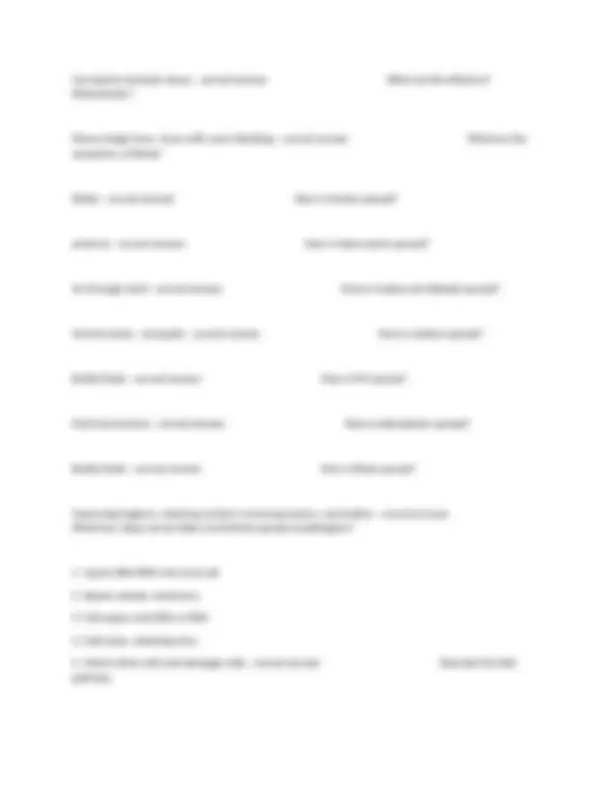
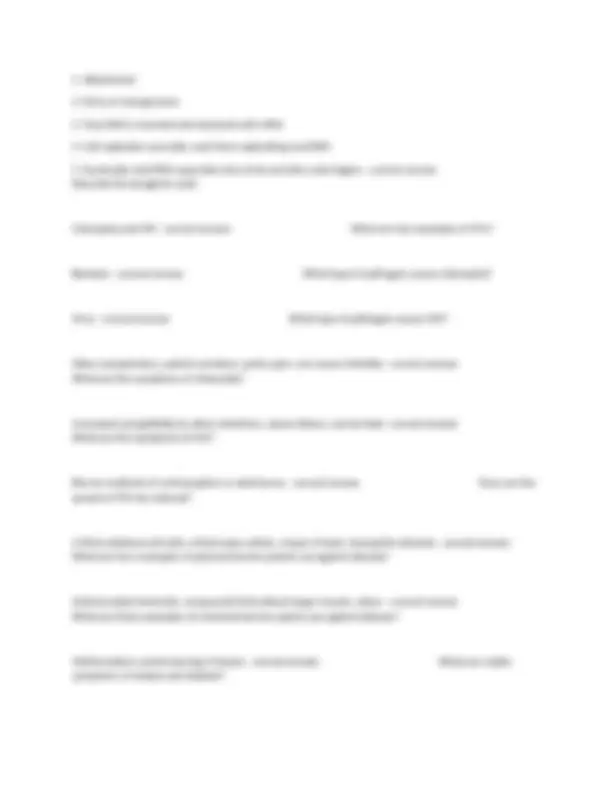
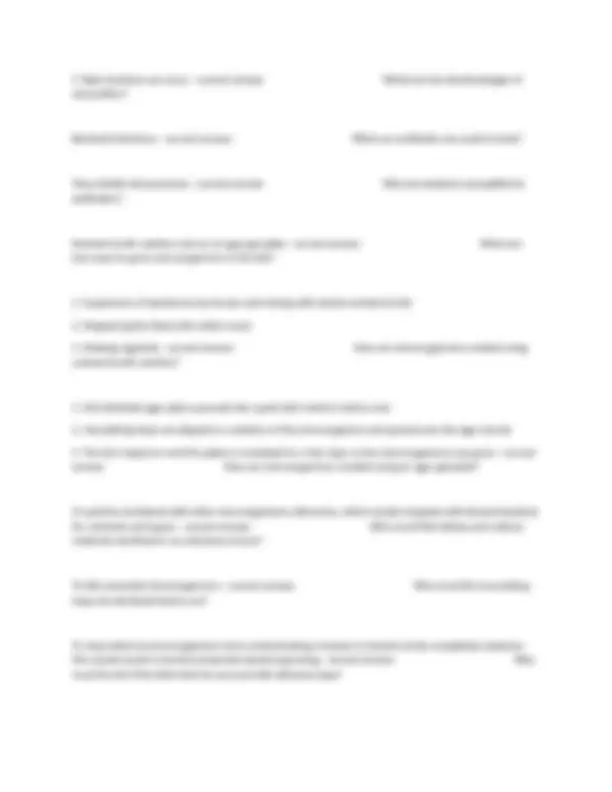
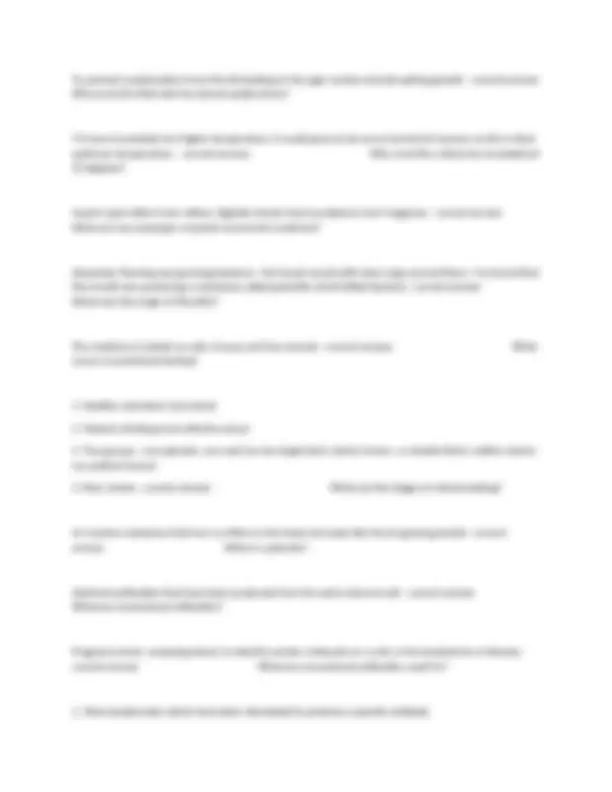
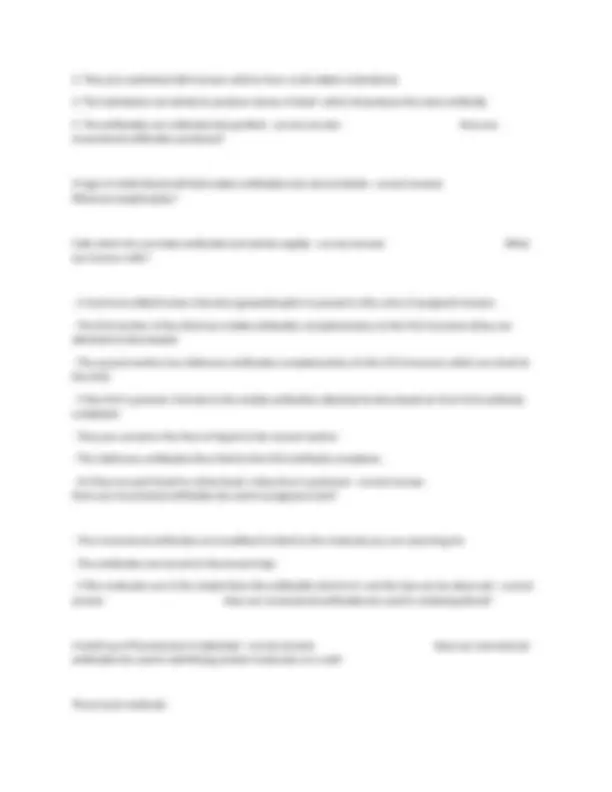

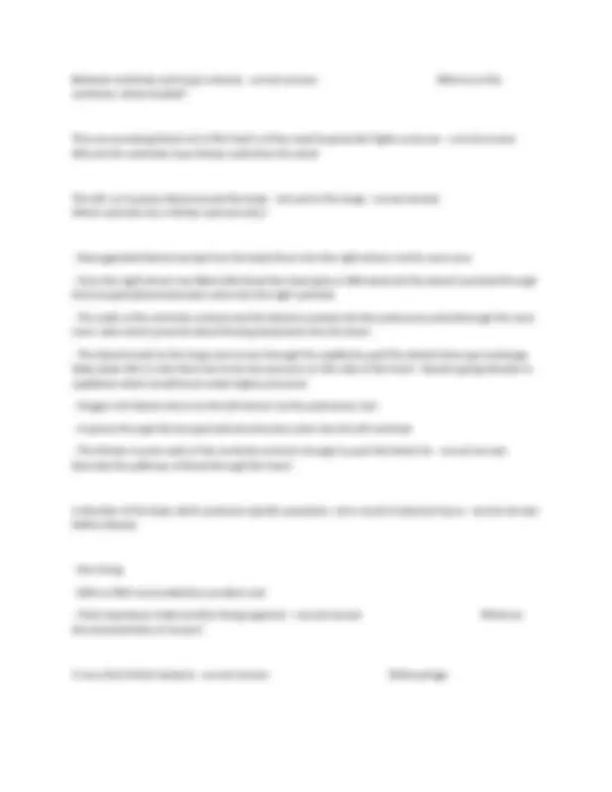
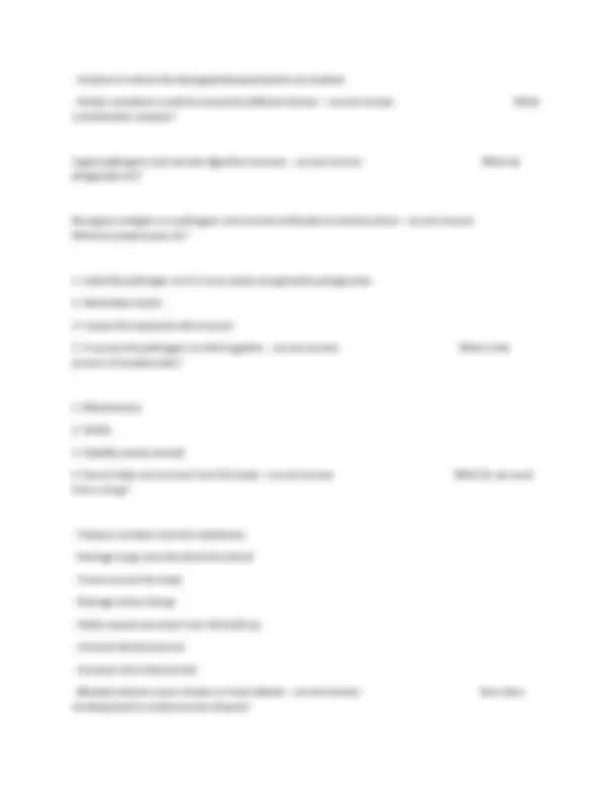


Study with the several resources on Docsity

Earn points by helping other students or get them with a premium plan


Prepare for your exams
Study with the several resources on Docsity

Earn points to download
Earn points by helping other students or get them with a premium plan
Community
Ask the community for help and clear up your study doubts
Discover the best universities in your country according to Docsity users
Free resources
Download our free guides on studying techniques, anxiety management strategies, and thesis advice from Docsity tutors
GCSE Biology Edexcel Complete Assignment Questions And Answers
Typology: Exams
1 / 15

This page cannot be seen from the preview
Don't miss anything!










a state of complete physical, mental, and social well-being and not merely the absence of disease or infirmity - correct answer Define health A disease that can be passed from one person to another - correct answer Define communicable disease A disease which cannot be passed from one person to another - correct answer Define non-communicable disease The common cold - correct answer Give an example of a communicable disease Asthma, cancer and coronary heart disease - correct answer Give examples of non-communicable diseases The presence of one disease, as your immune system is impaired so other pathogens are more able to cause disease, barriers may also be damaged - correct answer What can lead to increased susceptibility to diseases and why? Having HIV can leave you at risk to many other opportunistic infections - correct answer What is an example of a disease which can lead to increased susceptibility? A disease causing organism - correct answer Define pathogen Direct contact, water or air - correct answer What are the three ways which pathogens can infect plants/animals? Very small, smaller than cells and bacteria - correct answer How big are viruses?
Small, but bigger than viruses - correct answer How big are bacteria? Binary fission - correct answer What is the process of bacteria dividing quickly called? Toxins - correct answer What do bacteria produce? Either single celled or have a body of hyphae (thread-like structures) - correct answer How big are fungi? Some are parasitic - correct answer What is the nature of protists? Cholera - correct answer What disease is caused by vibrio cholerae? Tuberculosis - correct answer What disease is caused by mycobacterium tuberculosis? Chalara ash dieback - correct answer What disease is caused by hympenoscyphus fraxineus? Malaria - correct answer What disease is caused by plasmodium falciparum? HIV - correct answer What disease is caused by human immunodeficiency virus? Helicobacter - correct answer What disease is caused by helicobacter pylori? Ebola - correct answer What disease is caused by B. ebolavirus?
Can lead to stomach ulcers - correct answer What are the effects of Helicobacter? Hemorrhagic fever, fever with sever bleeding - correct answer What are the symptoms of Ebola? Water - correct answer How is cholera spread? airborne - correct answer How is tuberculosis spread? Air through wind - correct answer How is chalara ash dieback spread? Animal vector - mosquito - correct answer How is malaria spread? Bodily fluids - correct answer How is HIV spread? Oral transmission - correct answer How is helicobacter spread? Bodily fluids - correct answer How is Ebola spread? Improving hygiene, reducing contact, removing vectors, vaccination - correct answer What four steps can be taken to limit the spread of pathogens?
Used to kill bacteria in food reaching the stomach - correct answer What is the function of hydrochloric acid? Phagocytosis, producing antibodies, producing antitoxins - correct answer What are the three types of immune response? It engulfs pathogens, destroying them - correct answer How does phagocytosis protect the body? Antibodies begin to bind to the antigen on the pathogen > This makes it easier for white blood cells to find them and engulf them (phagocytosis) > This process produces memory lymphocytes - correct answer How does producing antibodies protect the body? If you become infected again with the same pathogen, the specific complementary antibodies will be produced at a faster rate. The individual will not feel symptoms. - correct answer How do the memory lymphocytes help the immune system fight pathogens? They neutralise toxins released by the pathogen by binding to them - correct answer How does producing antitoxins protect the body? When a majority of a population are vaccinated against a disease. This means that even people who have not been vaccinated are less likely to get it because there are fewer people to catch it from. - correct answer What is herd immunity? A small amount of dead or weakened microbe is injected - white blood cells are stimulated to produce antibodies complementary to the antigens on the pathogen - correct answer How does vaccination work?
Between ventricles and major arteries - correct answer Where are the semilunar valves located? They are pumping blood out of the heart so they need to generate higher pressure - correct answer Why do the ventricles have thicker walls than the atria? The left, as it pumps blood around the body - not just to the lungs - correct answer Which ventricle has a thicker wall and why?